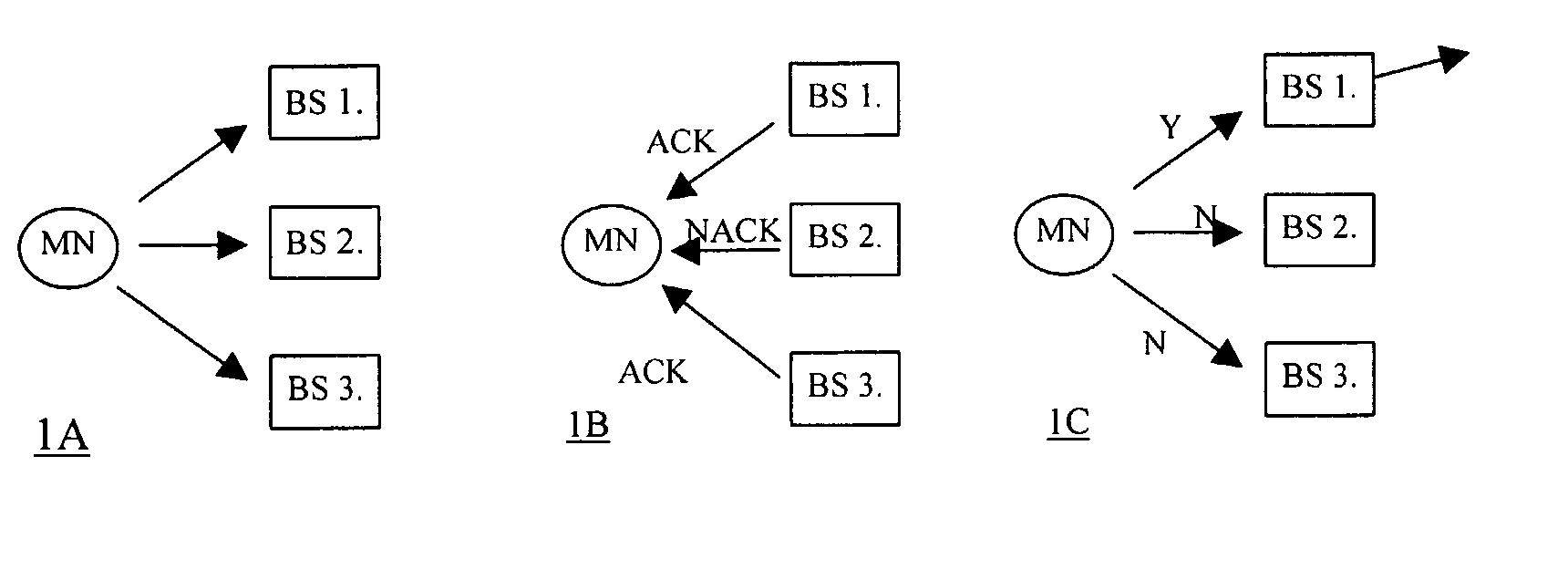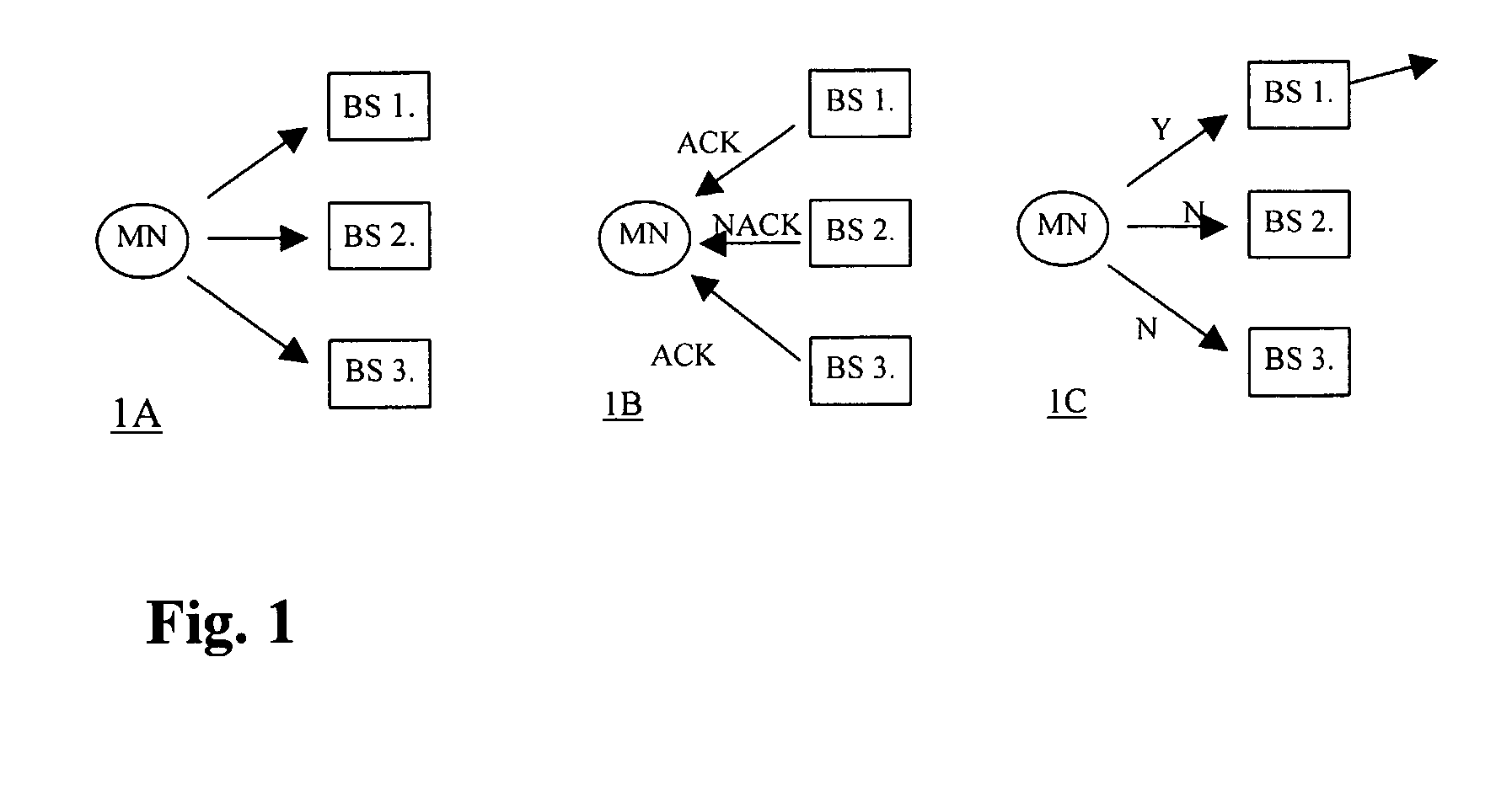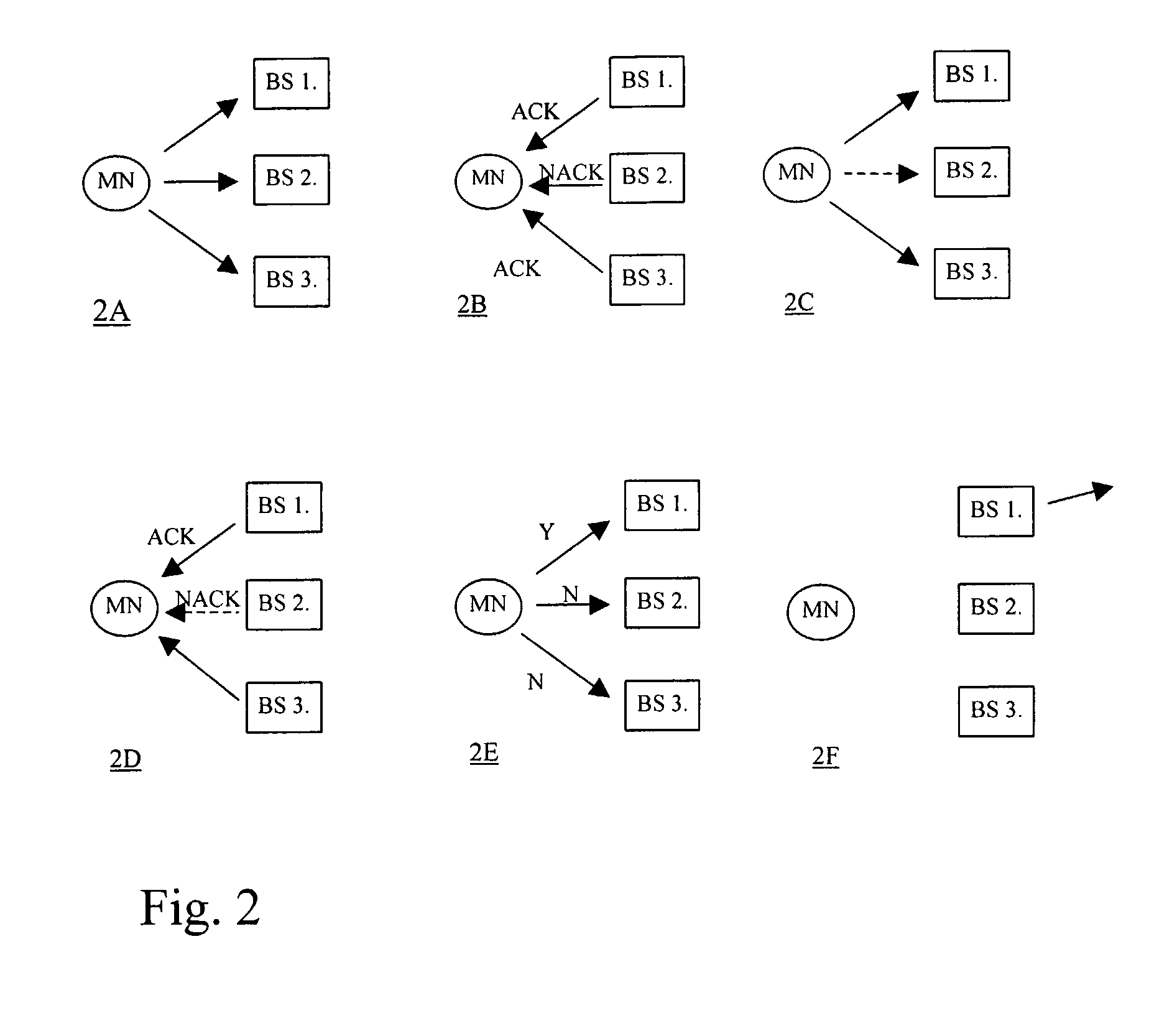Fast hard handover scheme and mobile station and base station supporting such scheme
a technology of mobile station and hard handover, which is applied in the direction of electrical equipment, power management, wireless commuication services, etc., can solve the problems of affecting affecting the quality affecting the reliability of mobile station and base station, so as to reduce the overall system complexity, simplify the network architecture, and achieve similar diversity. the effect of gaining diversity
- Summary
- Abstract
- Description
- Claims
- Application Information
AI Technical Summary
Benefits of technology
Problems solved by technology
Method used
Image
Examples
Embodiment Construction
[0020] The principle idea of the present invention is to let the mobile station MS control the uplink selection combining instead of having a combiner node in the network. There is an active set of base stations in relation to each mobile station, any of which can potentially be selected by the mobile station to be the receiver and forwarder of a given packet. The active set can be maintained similarly as in case of soft handover. That is, base stations can be added, removed and replaced in the active set based on averaged measured path loss values.
[0021] The mobile station selects for each data packet one of the base stations from the active set that should forward the packet further up in the network. The mobile station can take into account ARQ (Automatic Repeat Requests) feedbacks in the form of positive or negative acknowledgements, link quality reports and higher layer packet segment boundaries when making the base station selection. There are two main embodiments of the base...
PUM
 Login to View More
Login to View More Abstract
Description
Claims
Application Information
 Login to View More
Login to View More - R&D
- Intellectual Property
- Life Sciences
- Materials
- Tech Scout
- Unparalleled Data Quality
- Higher Quality Content
- 60% Fewer Hallucinations
Browse by: Latest US Patents, China's latest patents, Technical Efficacy Thesaurus, Application Domain, Technology Topic, Popular Technical Reports.
© 2025 PatSnap. All rights reserved.Legal|Privacy policy|Modern Slavery Act Transparency Statement|Sitemap|About US| Contact US: help@patsnap.com



